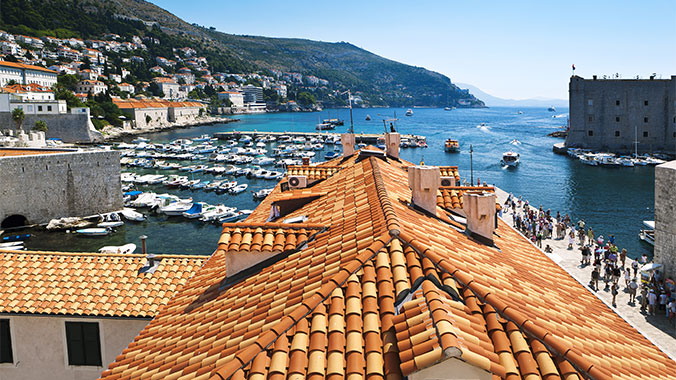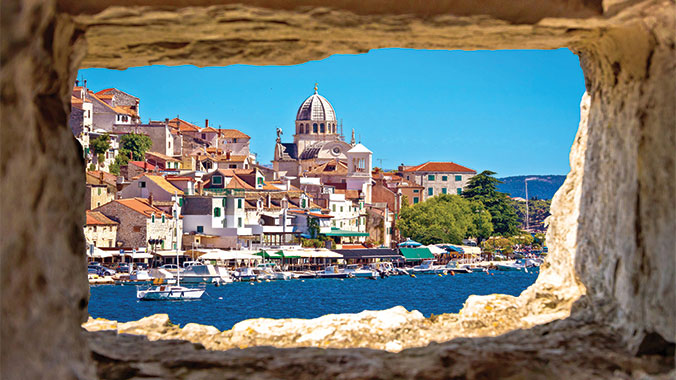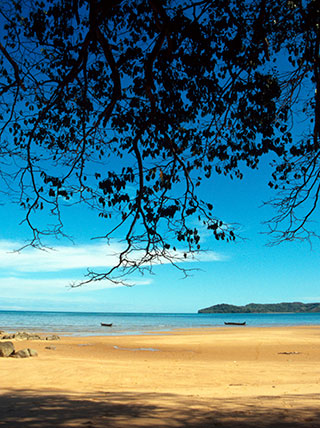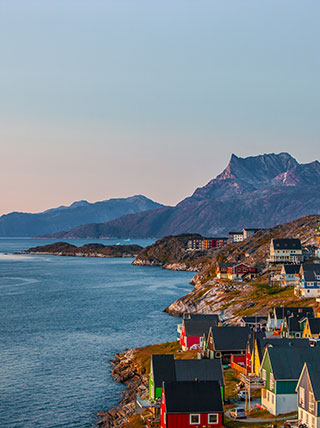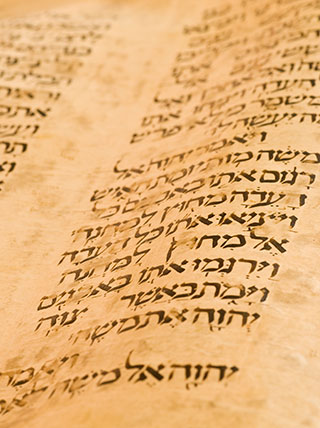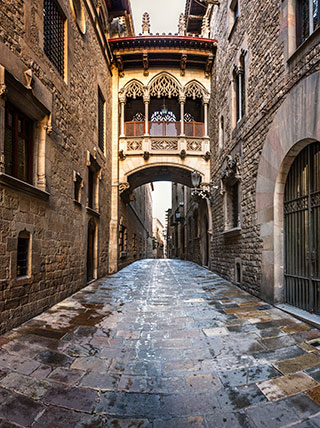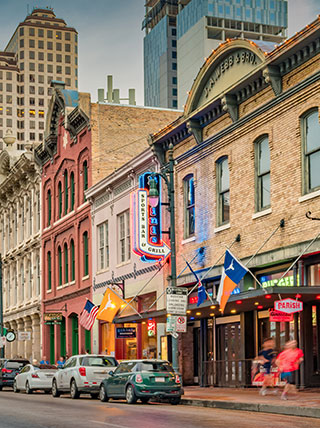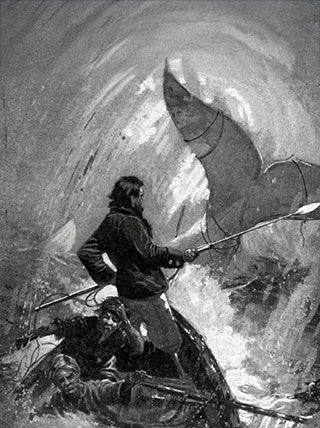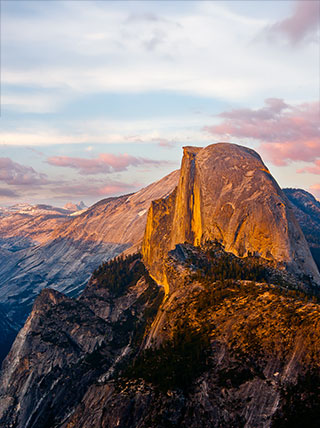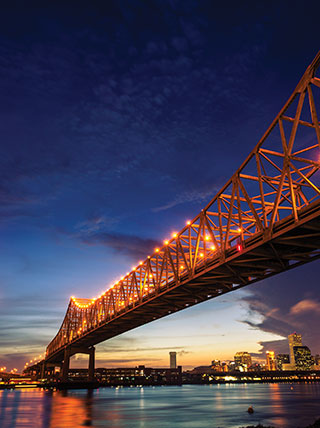Online Program
Adventures Online: Croatia’s Dalmatian Coast, Dubrovnik & More
Program No. 24205RJ
From the Dalmatian Coast to the city of Dubrovnik, join our experts to explore the very best of Croatia during this live, online learning adventure!
Enroll with Confidence
We want your Road Scholar learning adventure to be something to look forward to—not worry about. Learn more
Protecting the Environment
We offset a portion of the emissions created by your travel. Learn more
Itinerary
While we make every effort to ensure the accuracy of our published materials, programs are typically advertised more than a year prior to their start date.
Day
1
Dalmatian history, Diocletian Palace and Split
Location:
From the comfort of your own home.
Activity Note
All times noted are Eastern Time. Today’s session will begin at 11:00 a.m. and end at 2:40 p.m.
Morning:
11:00 a.m. Orientation & Introductions (40 minutes). Our Study Leader will greet everyone and provide an overview of the program and today’s schedule including Zoom protocol. We will then say hello to one another and share our interests and expectations. 11:30 a.m. Lecture (60 minutes). Our Study Leader will give us a historical review of Dalmatia, the region at the southern end of modern Croatia. It was named for the Dalmatae tribe that occupied the area in the 1st century CE. While it once controlled vast swaths of territory, Dalmatia later became concentrated along the Adriatic coast. With the Adriatic blending into the Mediterranean and vice-versa, there was extensive interaction between Dalmatians and people of other lands. We will learn about the first inhabitants, economic and political development, the arrival of Slavic tribes, and divisions of the territory as well as its position and hopes today.
Afternoon:
12:40 p.m. Break (20 minutes). 1:00 p.m. Virtual field trip (60 minutes). We will “explore” the living city of Split. Situated on the eastern shore of the Mediterranean, it was founded as a Greek settlement in ancient times. Its urban development was spurred by the building of a palace in 295 CE for the Roman emperor Diocletian, who had been born not far from here in Salona. We will see highlights of Diocletian’s Palace, one of the best-preserved Roman monuments in the world. Later inhabitants made modifications that changed the original appearance, but we can still marvel at Diocletian’s retirement home. It is part of the UNESCO-designated World Heritage Site. As we “stroll” around some of the streets, we’ll learn about the palace-fortress, its transformation within the original walls, and adaptation to modern life. 2:00 p.m. Interactive Q&A (40 minutes) with wrap-up and notes for tomorrow. 2:40 p.m. Today’s session will end.
Day
2
Šibenik, UNESCO heritage, village of Draga, Ivan Mestrovic
Location:
From the comfort of your own home.
Activity Note
All times noted are Eastern Time. Today’s session will begin at 11:00 a.m. and end at 2:05 p.m.
Morning:
11:00 a.m. Review of the day (5 minutes). 11:05 a.m. Virtual field trip (60 minutes). We will go on a virtual exploration of Šibenik in central Dalmatia, the first town on the Adriatic founded by Croats. We’ll learn about people from the local area who contributed to world history. As we explore, we will experience the charm and become acquainted with traditional housing and learn about local life. We’ll also see famed St. Jacob’s cathedral, an architectural masterpiece of the Renaissance that is a UNESCO-designated World Heritage Site. From the UNESCO inscription: “The Cathedral of St James in Šibenik (1431-1535), on the Dalmatian coast, bears witness to the considerable exchanges in the field of monumental arts between Northern Italy, Dalmatia and Tuscany in the 15th and 16th centuries.”
Afternoon:
12:05 p.m. Break (20 minutes). 12:25 p.m. Lecture (60 minutes). Ivan Mestrovic (1883-1962) was one of the most famous and influential Croatian artists, a creator of many important Croatian cultural landmarks who left a significant trace in American culture as well. We will learn the stories behind a number of exceptional masterworks both in Croatia and in the United States, where he emigrated after World War II. We will study stylistic and iconographic features of his art as well as details of his professional and personal life during one of the most turbulent times in history: the first half of the 20th century. 1:25 p.m. Interactive Q&A (40 minutes) with wrap-up and notes for tomorrow. 2:05 p.m. Today’s session will end.
Day
3
Hvar& Stari Grad, Cultural overview from Greeks to present
Location:
From the comfort of your own home.
Activity Note
All times noted are Eastern Time. Today’s session will begin at 11:00 a.m. and end at 2:05 p.m.
Morning:
11:00 a.m. Review of the day (5 minutes). 11:05 a.m. Virtual field trip (60 minutes). We will learn about the Adriatic island of Hvar, where Greek colonizers founded the ancient town of Faros — now Stari Gradi — circa 384 BCE. We’ll hear of Greek traces in the area and the economy of ancient Dalmatia as a base for today’s olive oil and wine production. We’ll also learn how people live on the island today with their local customs and traditions.
Afternoon:
12:05 p.m. Break (20 minutes). 12:25 p.m. Lecture (60 minutes). We will be joined by Professor Vedran Barbaric, a member of the Faculty of Humanities and Social Science at the University of Split, who will tell us about cultural dynamics on the central Dalmatian islands since antiquity. Their geographical position was the key to dynamic processes that shaped the cultural geography of this area. We will learn about changes that shaped early history and go from prehistoric seafarers to Greek ships sailing to the granaries of the northern Adriatic, to Romans selecting this as one of the desirable regions, and as the final frontier of Slavic expansion due south. 1:25 p.m. Interactive Q&A (40 minutes) with wrap-up and notes for tomorrow. 2:05 p.m. Today’s session will end.
Day
4
Korcula & the Mediterranean Kaleidoscope, The Adriatic Sea
Location:
From the comfort of your own home.
Activity Note
All times noted are Eastern Time. Today’s session will begin at 11:00 a.m. and end at 2:05 p.m.
Morning:
11:00 a.m. Review of the day (5 minutes). 11:05 a.m. Virtual field trip (60 minutes). During this virtual encounter, we will explore Korcula, a historic fortified town on the protected east coast of the island of the same name. It is an ancient place imbued with numerous legends. One is that it was founded by refugees from Troy; another is that Marco Polo was born here. The old city is surrounded by walls where narrow streets hold the rich history of palaces, people, churches, ships, and travels. Korcula has a venerable maritime history as well as a distinctive musical heritage. We will see the ruins of a house that was the purported home of Marco Polo and learn about Moreska, a sword dance performed here for centuries as highlight of local life.
Afternoon:
12:05 p.m. Break (20 minutes). 12:25 p.m. Lecture (60 minutes). Professor Alen Soldo of the Department of Marine Studies at the University of Split will join us for a presentation on the Adriatic Sea and its living resources. The Adriatic is a gulf in the northernmost part of the Mediterranean. During most of the Tertiary Age, this was part of the primeval Tethys Ocean. Today, the Adriatic is a relatively shallow sea, home to between 6,000 and 7,000 plant and animal species, although new species are constantly being discovered. There are more than 440 fish species and subspecies, approximately 70% of the known fish species and subspecies in the Mediterranean. 1:25 p.m. Interactive Q&A (30 minutes) with wrap-up and notes for tomorrow. 1:55 p.m. Today’s session will end.
Day
5
Dubrovnik - Pearl of the Adriatic, Republic of Ragusa
Location:
From the comfort of your own home.
Activity Note
All times noted are Eastern Time. Today’s session will begin at 11:00 a.m. and end at 2:05 p.m.
Morning:
11:00 a.m. Review of the day (5 minutes). 11:05 a.m. Virtual field trip (60 minutes). We will explore Dubrovnik — dubbed “the pearl of the Adriatic” by Lord Byron — and one of UNESCO’s most renowned World Heritage Sites. It was founded in the 7th century CE and then known as Ragusa. There were defensive walls from the earliest days. The magnificent stone ramparts we see today encircling the Old City were constructed from the 12th through the 17th centuries. We will learn about Ragusa as we “walk” through streets that have existed for centuries. Dubrovnik was its own free republic for more than 400 years in an exceptionally turbulent period in European history. We’ll become acquainted with its diplomatic and political achievements as well as its geopolitical importance on the border between western and Eastern world, and their effect on contemporary life. From the UNESCO inscription: “The ‘Pearl of the Adriatic’, situated on the Dalmatian coast, became an important Mediterranean sea power from the 13th century onwards. Although severely damaged by an earthquake in 1667, Dubrovnik managed to preserve its beautiful Gothic, Renaissance and Baroque churches, monasteries, palaces and fountains. Damaged again in the 1990s by armed conflict, it is now the focus of a major restoration programme co-ordinated by UNESCO.”
Afternoon:
12:05 p.m. Break (20 minutes). 12:25 p.m. Lecture (60 minutes). We will be joined by Professor Lovro Kuncevic, a researcher at the Institute for Historical Sciences of the Croatian Academy of Sciences and Arts. He will provide a detailed picture of the Republica Ragusina — the Republic of Ragusa (Dubrovnik) — that existed from 1358 until 1808 and how this city-state managed to preserve its independence surrounded by superpowers such as the Ottoman Empire and the Venetian Republic. We’ll learn about the peculiar political system with one of the most rigidly aristocratic constitutions in European history, for centuries ruled by a closed hereditary patrician caste. A key to the republic’s success for almost five centuries was its enormous importance as a trading mediator between the Ottoman and Christian worlds. We may be surprised to learn of the elaborate system to deal with the prevention of epidemics, primarily the plague, with familiar ideas of quarantine, self-isolation, and lockdown. 1:25 p.m. Interactive Q&A (30 minutes) and wrap-up. We will also say our farells. 1:55 p.m. This concludes our program.


